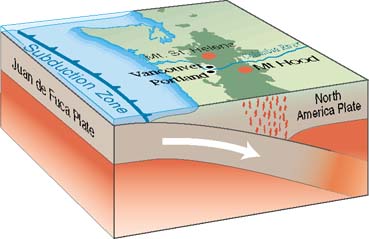Published on April 8, 2019

A University of Washington study that mapped methane gas emissions off the Washington coast provides new clues as to how the Cascadia Subduction Zone works.
The study, which was published last month in the Journal of Geophysical Research: Solid Earth, documented 1,778 methane bubble plumes grouped in 491 clusters off the Washington coast. The presence of the plumes isn’t new, but UW oceanography professor Paul Johnson, who was the lead author, said he was “stunned” by the sheer number of them.
The bubbles are created when the Juan de Fuca Plate plunges underneath the rigid North American plate. Sediment gets scraped off, which is then heated, deformed, and compressed against the North American plate, squeezing out fluid and methane gas.
They are mostly clustered between the flat continental shelf and the tectonic boundary, where the shelf descends to the ocean floor. After mapping the plume locations, researchers cross-referenced seismic data from oil and gas company surveys from the 1970s and 1980s to interpret why the plumes were located there.
Continue reading at King5
Originally posted on King5 News by Allison Sundell